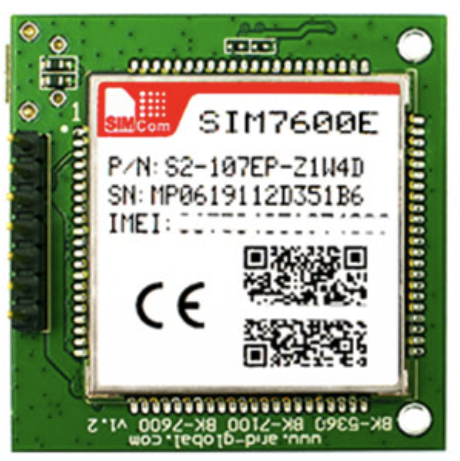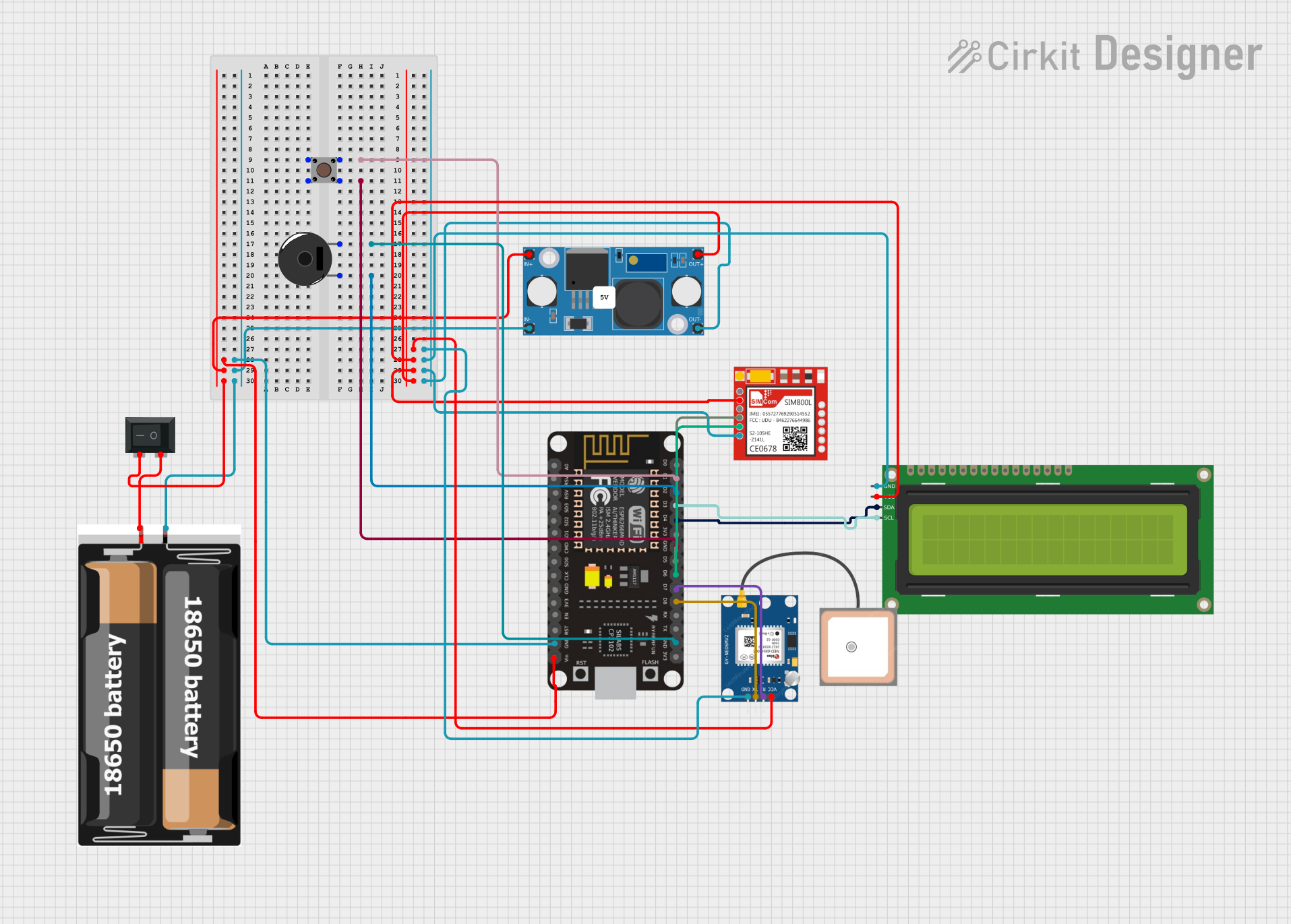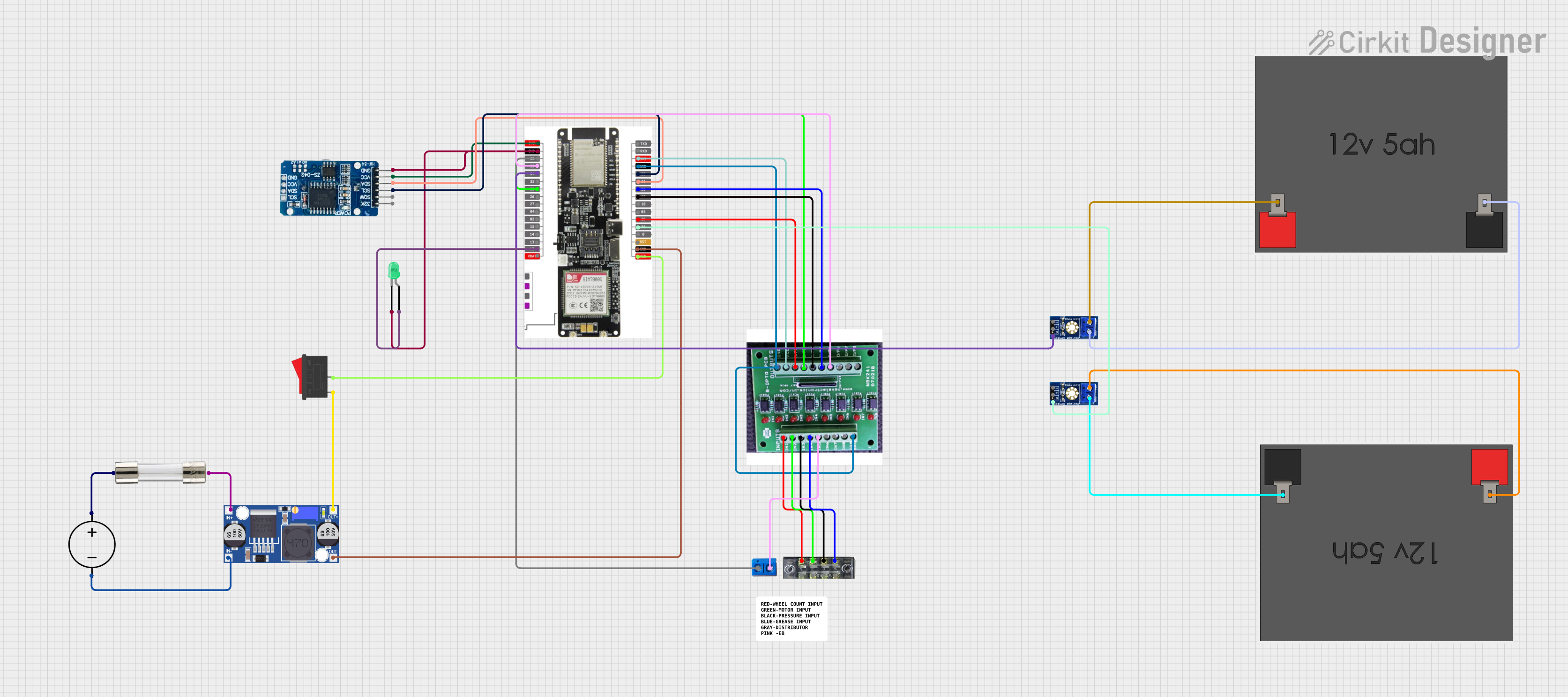
How to Use SIM7600E Module: Examples, Pinouts, and Specs

 Design with SIM7600E Module in Cirkit Designer
Design with SIM7600E Module in Cirkit DesignerIntroduction
The SIM7600E is a 4G LTE module designed to provide high-speed mobile data connectivity for IoT (Internet of Things) applications. It supports a wide range of communication protocols, including LTE, GSM, GPRS, and EDGE, making it a versatile choice for projects requiring reliable wireless communication. Additionally, the module features GPS functionality, enabling location-based services and navigation.
Explore Projects Built with SIM7600E Module

 Open Project in Cirkit Designer
Open Project in Cirkit Designer
 Open Project in Cirkit Designer
Open Project in Cirkit Designer
 Open Project in Cirkit Designer
Open Project in Cirkit Designer
 Open Project in Cirkit Designer
Open Project in Cirkit DesignerExplore Projects Built with SIM7600E Module

 Open Project in Cirkit Designer
Open Project in Cirkit Designer
 Open Project in Cirkit Designer
Open Project in Cirkit Designer
 Open Project in Cirkit Designer
Open Project in Cirkit Designer
 Open Project in Cirkit Designer
Open Project in Cirkit DesignerCommon Applications and Use Cases
- IoT devices requiring cellular connectivity
- GPS tracking and navigation systems
- Remote monitoring and control systems
- Smart meters and industrial automation
- Vehicle telematics and fleet management
- Mobile payment terminals
Technical Specifications
The SIM7600E module is packed with features that make it suitable for a variety of applications. Below are its key technical specifications:
General Specifications
| Parameter | Value |
|---|---|
| Cellular Network Support | 4G LTE, 3G, 2G |
| GPS Support | Yes (GNSS: GPS, GLONASS, BeiDou, Galileo) |
| Data Rates | LTE Cat-1: Uplink 5 Mbps, Downlink 10 Mbps |
| Operating Voltage | 3.4V to 4.2V |
| Power Consumption | Idle: ~20mA, Active: ~500mA |
| Operating Temperature | -40°C to +85°C |
| Dimensions | 30mm x 30mm x 2.9mm |
Pin Configuration and Descriptions
The SIM7600E module has multiple pins for power, communication, and control. Below is the pinout description:
| Pin Number | Pin Name | Description |
|---|---|---|
| 1 | VCC | Power supply input (3.4V to 4.2V) |
| 2 | GND | Ground |
| 3 | TXD | UART Transmit |
| 4 | RXD | UART Receive |
| 5 | NET_STATUS | Network status indicator |
| 6 | PWRKEY | Power on/off control |
| 7 | GNSS_TXD | GNSS UART Transmit |
| 8 | GNSS_RXD | GNSS UART Receive |
| 9 | USB_D+ | USB data positive |
| 10 | USB_D- | USB data negative |
| 11 | SIM_VDD | SIM card power supply |
| 12 | SIM_DATA | SIM card data |
| 13 | SIM_CLK | SIM card clock |
| 14 | SIM_RST | SIM card reset |
Usage Instructions
How to Use the SIM7600E Module in a Circuit
- Power Supply: Connect the VCC pin to a stable 3.7V power source and GND to ground. Ensure the power supply can handle peak currents of up to 2A.
- UART Communication: Connect the TXD and RXD pins to the corresponding UART pins of your microcontroller (e.g., Arduino UNO). Use a logic level converter if your microcontroller operates at 5V logic.
- Power On: Pull the PWRKEY pin low for at least 1 second to turn on the module.
- Antenna Connection: Attach a 4G LTE antenna to the module's antenna connector for optimal signal reception.
- SIM Card: Insert a micro-SIM card into the SIM card slot.
- GPS Functionality: Connect the GNSS_TXD and GNSS_RXD pins to your microcontroller for GPS data communication. Attach a GPS antenna to the GNSS antenna connector.
Important Considerations and Best Practices
- Use decoupling capacitors near the VCC pin to stabilize the power supply.
- Ensure proper grounding to avoid noise and interference.
- Use an external antenna for both LTE and GPS to achieve better signal quality.
- Avoid placing the module near high-frequency components to minimize interference.
- For Arduino UNO, use SoftwareSerial to communicate with the module, as the hardware UART is typically used for programming.
Example Code for Arduino UNO
Below is an example of how to send an SMS using the SIM7600E module with an Arduino UNO:
#include <SoftwareSerial.h>
// Define RX and TX pins for SoftwareSerial
SoftwareSerial sim7600(10, 11); // RX = pin 10, TX = pin 11
void setup() {
Serial.begin(9600); // Initialize Serial Monitor
sim7600.begin(9600); // Initialize SIM7600E communication
// Power on the module
pinMode(9, OUTPUT); // PWRKEY connected to pin 9
digitalWrite(9, LOW); // Pull PWRKEY low
delay(1000); // Wait for 1 second
digitalWrite(9, HIGH); // Release PWRKEY
delay(5000); // Wait for the module to initialize
// Send AT commands to configure the module
sendCommand("AT"); // Check communication
sendCommand("AT+CMGF=1"); // Set SMS mode to text
sendCommand("AT+CMGS=\"+1234567890\""); // Replace with recipient's number
sim7600.print("Hello, this is a test SMS from SIM7600E!"); // SMS content
sim7600.write(26); // Send Ctrl+Z to send the SMS
}
void loop() {
// Continuously read data from the module
if (sim7600.available()) {
Serial.write(sim7600.read());
}
}
// Function to send AT commands
void sendCommand(String command) {
sim7600.println(command);
delay(1000); // Wait for the module to respond
while (sim7600.available()) {
Serial.write(sim7600.read());
}
}
Troubleshooting and FAQs
Common Issues and Solutions
Module Not Powering On
- Ensure the PWRKEY pin is pulled low for at least 1 second during startup.
- Verify the power supply voltage is within the 3.4V to 4.2V range and can handle peak currents.
No Network Connection
- Check the SIM card for proper insertion and activation.
- Ensure the antenna is securely connected and positioned for optimal signal reception.
- Use the
AT+CSQcommand to check signal strength. A value above 10 is recommended.
GPS Not Working
- Verify the GPS antenna is connected to the GNSS antenna port.
- Ensure the module is placed in an open area with a clear view of the sky.
- Use the
AT+CGNSPWR=1command to enable GPS functionality.
No Response to AT Commands
- Confirm the UART connections (TXD, RXD) are correct.
- Check the baud rate settings in your code and ensure they match the module's default (9600 bps).
FAQs
Q: Can the SIM7600E module work with 5V microcontrollers?
A: Yes, but you must use a logic level converter to shift the 5V signals to 3.3V for the module's UART pins.
Q: How do I check the module's firmware version?
A: Use the AT+CGMR command to query the firmware version.
Q: Can I use the SIM7600E for voice calls?
A: Yes, the module supports voice calls. Use the ATD command to dial a number and ATH to hang up.
Q: What is the maximum data rate supported by the module?
A: The SIM7600E supports LTE Cat-1 with a maximum uplink speed of 5 Mbps and downlink speed of 10 Mbps.